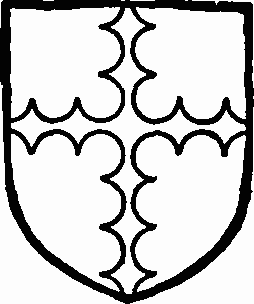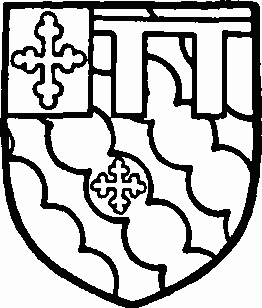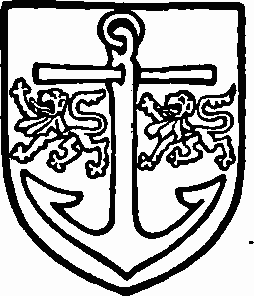A History of the County of Bedford: Volume 2. Originally published by Victoria County History, London, 1908.
This free content was digitised by double rekeying. All rights reserved.
'Parishes: Holwell', in A History of the County of Bedford: Volume 2, ed. William Page (London, 1908), British History Online https://prod.british-history.ac.uk/vch/beds/vol2/pp286-287 [accessed 7 February 2025].
'Parishes: Holwell', in A History of the County of Bedford: Volume 2. Edited by William Page (London, 1908), British History Online, accessed February 7, 2025, https://prod.british-history.ac.uk/vch/beds/vol2/pp286-287.
"Parishes: Holwell". A History of the County of Bedford: Volume 2. Ed. William Page (London, 1908), British History Online. Web. 7 February 2025. https://prod.british-history.ac.uk/vch/beds/vol2/pp286-287.
In this section
HOLWELL
Holewelle (xi cent.).
The parish of Holwell has an area of 892½ acres, almost the whole of which is arable land. (fn. 1) The soil is stiff clay, the subsoil, clay; the principal crops are oats, barley, beans, and peas. The land slopes from a height of 235 ft. above the ordnance datum in the south-west to 170 ft. in the north-east. It has been transferred, since the survey of 1831, from Bedfordshire to Hertfordshire.
The country is open and level, traversed from north to south by the main road from Shefford to Hitchin, and the few houses which form the village stand, together with the church and vicarage, at a little distance to the west of the road. In the south-east corner of the parish is a small group of houses, known as Cadwell, and on the northern boundary is Holwellbury, the only considerable building in the parish, with Old Ramerick Farm at a little distance to the west. This last is apparently but a fragment of a larger building, formerly of some importance.
Two small streams, tributaries of the Hiz, run across the parish from west to east, and the main line of the Great Northern Railway cuts through the eastern side, beyond the line of the main road, the nearest station being at Henlow.
The house at Old Ramerick has an eighteenthcentury red brick front, but at the back, and also in one of the barns, there are remains of old stonework.
Manor
The manor of HOLWELL originated in a charter of King Edgar, bearing date 968, and granting land in Holwell to the abbey of St. Peter of Westminster, which was confirmed in 1066 by Edward the Confessor when the land is described as 6½ hides. (fn. 2) At the Domesday Survey in 1086 the abbot of Westminster held a manor of the above extent in Holwell. (fn. 3) In the thirteenth century this manor was assessed for scutage at 9 marks yearly, (fn. 4) and included 6 hides, (fn. 5) and in 1490 Thomas Peyton held it of the abbey by service of £6 yearly, (fn. 6) but no further trace has been found of the overlordship, and it is not mentioned in the Valor Ecclesiasticus as belonging to Westminster Abbey.
The earliest lords of Holwell Manor, the Malories, are found settled in Holwell from the twelfth century holding their lands from the abbey of Westminster. A charter of John's reign contains the grant of half a virgate in Holwell from Simon Malory to his nephew Simon son of Robert. (fn. 7) Alice Malory, possibly the wife of the younger Simon, made good her claim to half a virgate here in 1228. (fn. 8) In 1241 Robert Malory held Holwell, described for the first time as a manor, (fn. 9) and a few years later was succeeded by his son John, (fn. 10) who justified his claim to Holwell by descent from one Bertram Malory. (fn. 11) John Malory held Holwell Manor in 1316, (fn. 12) and the family evidently retained the lordship, for in 1357 Simon Francis was holding land in Holwell of John Malory by service of suit of court. (fn. 13) Eleanor the daughter of a late John Malory married Sir John Bernard of Islesham, (fn. 14) who in 1464 placed this manor in the hands of trustees, (fn. 15) preliminary to settlement on his daughter Margaret who married Thomas Peyton. (fn. 16) Thomas Peyton, son of the above Thomas, died in possession of the manor in 1490 and left a brother Robert as his heir. (fn. 17) Though there is little documentary evidence, this family appears to have continued to hold Holwell manor, for in 1561 it was in the possession of Thomas Peyton, (fn. 18) who in 1564 finally alienated it to Robert Ivory. (fn. 19) John Ivory, probably son of Robert, held the manor in 1600 (fn. 20) and was followed by William Ivory who in 1656 alienated the manor to Thomas Stoneylove. (fn. 21) He transferred it in 1673 to George Nodes, (fn. 22) by whose son George it was alienated in 1704 to Ralph Wingate and Robert Raworth. (fn. 23) This manor subsequently passed to the Foresters, though no record of the transfer has been found, and in 1765 Baldwyn Leighton, nephew of Diana Forester, sold it to John Radcliffe. (fn. 24)

Malory. Or a lion gules with a forked tail.

Peyton. Sable a cross engrailed or.
He died without issue in 1783, and was succeeded by Mr. Delmé who had married his niece Anne Clarke. (fn. 25) The manor then passed to Henry Delmé Radcliffe, their son, (fn. 26) who died childless in 1830 and was succeeded by his brother Frederick Peter, whose son Francis Delmé Radcliffe is at the present day lord of the manor. (fn. 27)
In the fourteenth century the family of Spigurnel held land in Holwell, of which the first mention is found in 1309 when Henry Spigurnel received a charter of free warren here. (fn. 28) In 1386 William son. of William Spigurnel, and probably grandson of Henry, held a toft, a carucate of land and 6s. 8d. rent in Holwell, which passed at his death to his aunt Lucy, wife of William Alberd. (fn. 29) She, at her death in 1390, left a daughter Amicia wife of John de Kyrkham, (fn. 30) but it has not been found possible to trace the descent of this property further.

Radcliffe. Argent a cros.let gules between three bends engrailed sable with a label and a quarter sable and a crosslet or upon the quarter.

Delme. Or an anchor sable between two lions passant gules.
Church
The church of ST. PETER was entirely rebuilt in 1877 in fourteenthcentury style, and consists of a chancel 19 ft. by 16 ft. 6 in.; nave 38 ft. by 18 ft. 6 in., south aisle 26 ft. 6 in. by 10 ft. 6 in., and south porch with a small tower over.
A few pieces of old work have been re-used, the most interesting being the string across the inner face of the east wall of the chancel. This is of fourteenthcentury date and has a hollow chamfer on the under side. At the north end is a grotesque beast with a long snout, and closed wings; out of its mouth issues a wavy stem on which at irregular intervals are set ball flowers, human heads, and leaves.
In the north wall of the nave a fifteenth-century piscina head has been reset with modern jambs, &c.; it was probably cinquefoiled, but only a piece of the middle foil remains.
The doorway on the north side of the nave is also of fifteenth-century date with a four-centred arch.
The details of the modern work call for little description. The chancel has an east window of three lights, two single-light windows on the south, and one on the north. The chancel arch is of two chamfered orders springing from short corbelled shafts, and the nave has a south arcade of two bays, and a west window of three trefoiled lights with tracery over. The east window of the aisle is a single trefoiled light and in the south wall are two square-headed windows, one of two and the other of three trefoiled lights. There is a doorway at the west end of the aisle, in addition to those north and south of the nave.
The only monument of interest is a slab at the east end of the nave, with an inscription on a brass plate to a priest, Robert Wodehouse, who died in 1515. Above the inscription is a chalice and Host, instead of the figure of the person commemorated, and on either side two will men or Woodhouses, armed with clubs and targets.
In the tower are two bells by T. Mears, 1841.
The plate is modern, consisting of a silver cup, large and small patens and a plated flagon.
The registers begin in 1560, and the first book contains baptisms, marriages, and burials to 1765.
Advowson
The advowson of Great Holwell church appears to have been attached to the manor (q.v.) (fn. 31) until 1673, when it was purchased from George Nodes by Sir Ralph Radcliffe, (fn. 32) whose great-grandson John Radcliffe acquired in 1765 the manor of Holwell (q.v.), with which the advowson has since gone. (fn. 33)
Charities
Rand's Educational Foundation, derived under the will of John Rand, 1706. See above, 'Schools.'
Rand's Elementary Charity.—By an order of the Charity Commissioners of 5 August, 1904, made under Board of Education Act, 1899, the following items were exempted from purposes of education and continue to be applicable under the provisions of a scheme of the High Court of Chancery of 21 April, 1866:—
(a) The Rectory House at Holwell.
(b) The land and building, appropriated for the purposes of almshouses belonging to the foundation.
(c) A yearly sum of £180 out of income in the maintenance of almspeople and pensioners.
(d) A yearly sum of £40 for relief of sick and infirm poor.
(e) A yearly sum of £100 to the rector of Holwell for the performance of divine service with sermon in the church twice on every Sunday throughout the year.
(f) A yearly sum of £160 for apprenticeship premiums and rewards.
(g) A yearly sum of £10 for the benefit of the village lending library.
By the Chancery scheme above referred to the benefits of the charity were extended to Pirton, Ickleford and Lower Stondon.
